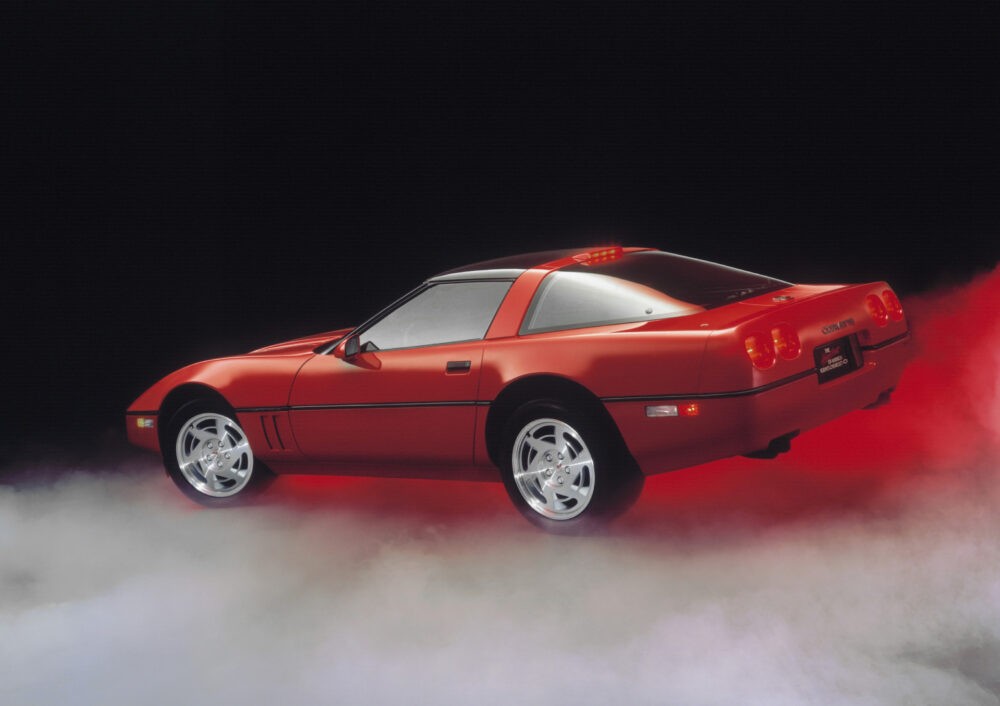The 1990 Zr1 Corvette stands as an automotive enigma. Boasting performance figures that rivaled European supercars of its era, and equipped with a revolutionary engine, it begs the question: why does this iconic piece of American engineering remain so relatively affordable on the used car market? Let’s delve into the factors that contribute to the surprisingly accessible price point of the C4 ZR-1.
Just a decade ago, a pristine Corvette C4 ZR-1 could be found at car shows with asking prices hovering around $27,000. Fast forward to today’s inflated classic car landscape, and the average sale price, even on platforms like Bring A Trailer, barely exceeds $28,000. While C4 Corvettes in general have long been celebrated for offering exceptional performance value, the ZR-1’s stagnant price in a booming collector car market raises eyebrows. It’s a stark contrast to the escalating values of other performance cars from the same period.
The ZR-1 was not merely an upgraded Corvette; it was a transformation. Dubbed “the Corvette from Hell” for its ferocious capabilities, it featured the groundbreaking LT5 engine. This all-aluminum, four-cam, sixteen-valve marvel delivered between 390 and 405 horsepower – power output comparable to the C5 Z06 of a decade later. Its performance credentials were undeniable: a sub-5-second sprint to 60 mph and a top speed of 175 mph. These figures placed it squarely in competition with European giants like the Porsche 911 Turbo, Ferrari Testarossa, and Lamborghini Countach. Yet, while those European counterparts now command prices reaching into the six-figure territory, the 1990 ZR1 remains valued similarly to a modern, mainstream SUV.
Chevrolet produced fewer than 7,000 ZR-1 units between 1990 and 1995, making it a relatively rare machine. When questioned about the limited production numbers, Corvette chief engineer Dave Hill suggested that the ZR-1’s lukewarm reception might have been unexpected, failing to garner the widespread collector interest initially anticipated. Typically, rarity and unique engineering are catalysts for strong collector car demand. However, the ZR-1 seems to occupy a peculiar space, often overlooked in the classic car conversation.
Decoding the Affordability: Why is the 1990 ZR1 So Accessible?
Several key factors contribute to the 1990 ZR1‘s surprisingly modest market value.
Firstly, its visual subtlety plays a significant role. To the untrained eye, the ZR-1 bears a striking resemblance to a standard C4 Corvette. Keen observers might notice the squared-off taillights and slightly wider tires, and the discreet ZR-1 badges offer another clue. However, placing a ZR-1 alongside a regular C4 Corvette reveals only minor distinctions, discernible primarily to Corvette aficionados. In contrast, performance-enhanced contemporaries like the twin-turbo Callaway Corvette boasted more overt visual modifications, such as distinctive front air dams and side vents, immediately setting them apart.
Secondly, advancements in the base Corvette’s performance narrowed the perceived performance gap. The introduction of the LT1 engine in the standard Corvette for 1992 marked a significant leap forward. Producing 300 horsepower, the LT1 dramatically improved performance compared to the preceding 1991 model. 0-60 mph times dropped into the mid-five-second range, and top speeds climbed to 163 mph. These figures, while slightly less impressive than the ZR-1‘s benchmark numbers, were achieved in a Corvette that cost considerably less, diminishing the perceived value proposition of the higher-priced ZR-1 for some buyers.
Finally, the original price point of the ZR-1 itself likely contributed to its current market position. The Corvette, historically, has represented an attainable dream car – a world-class sports car accessible to individuals of middle-class means. It offered the opportunity to own a vehicle capable of competing with prestigious European marques, both on the track and in terms of aspirational appeal. While the ZR-1 arguably surpassed many of these European rivals in performance, its elevated price tag placed it beyond the reach of the Corvette’s traditional buyer base. Imagine Chevrolet today releasing a $200,000 Corvette with performance mirroring the new C8 Z06; it might face a similar challenge in resonating with its core audience despite its exceptional capabilities.
Despite its affordability relative to its performance and historical significance, the 1990 ZR1 remains a landmark achievement for Corvette. It served as Chevrolet’s technological moonshot, demonstrating the C4 platform’s true potential and challenging global perceptions of American sports car engineering. While currently priced at roughly twice the value of a standard C4 of the same era, the ZR-1 represents remarkable value when its performance pedigree and the caliber of cars it once rivaled are taken into consideration.
